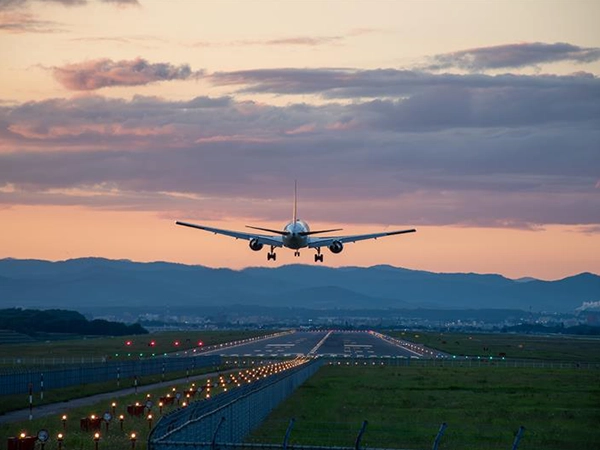The aviation industry, a marvel of interconnected technology, relies on an intricate web of systems – from air traffic control and navigation to intricate avionics within aircraft. While this digital transformation has brought incredible efficiency and safety enhancements, it has also opened the door to a terrifying new frontier of cyber threats: zero-click attacks.
Unlike phishing or malicious links, zero-click attacks in aviation are entirely invisible—an adversary could compromise critical flight systems, air traffic management, or airport infrastructure without a single human interaction, highlighting the urgency of aviation cybersecurity as we’ve emphasized in our post on CNS and ATM resilience.
What Makes Aviation Vulnerable to Zero-Click?
The very nature of modern aviation, with its deep reliance on interconnected — often legacy — systems, creates a fertile ground for these insidious attacks:
- Interconnected Systems: Airlines, airports, air traffic control, and even third-party vendors are digitally linked. A vulnerability in one component could cascade across the entire ecosystem.
- Aging Infrastructure and Software: Many core aviation systems, while incredibly robust, were designed decades ago — before the full scope of modern cyber threats was understood. Integrating these older systems with newer, more connected technologies can create unforeseen weaknesses.
- Complex Supply Chains: The aviation industry’s global supply chain introduces numerous potential entry points for attackers. A compromised component or software update from a vendor could unwittingly introduce a zero-click vulnerability.
- High-Value Targets: The potential for widespread disruption, economic damage, or even catastrophic safety incidents makes aviation a prime target for state-sponsored actors, sophisticated criminal organizations, or even rogue individuals.
- Automated Data Processing: Avionics and air traffic control systems constantly receive and process vast amounts of data from various sources. If a zero-click exploit injects malicious code into this automated processing, it could wreak havoc — without any human intervention.
The Terrifying Potential of a Zero-Click Attack in the Skies
The consequences of a successful zero-click attack in aviation could be dire:
- Disruption of Air Traffic Control: Imagine radar screens going blank, flight paths being spoofed, or communication systems failing — leading to widespread delays, diversions, or even mid-air collisions.
- Compromise of Aircraft Systems: An attack on avionics could interfere with navigation, flight controls, or communication systems, jeopardizing the safety of passengers and crew.
- Airport Infrastructure Chaos: Zero-click exploits could target baggage handling systems, fueling operations, security checkpoints, or ground movement controls, bringing an entire airport to a standstill.
- Data Exfiltration with Catastrophic Impact: While less directly tied to flight safety, stealing sensitive operational data, passenger manifests, or critical intellectual property could cause profound financial and reputational damage — and inform future attacks.
Defending Against the Invisible: A Proactive Stance
Given the “zero-interaction” nature of these attacks, traditional cybersecurity measures that rely on user vigilance are insufficient. The aviation industry must adopt a more sophisticated and proactive defense strategy:
- Relentless Patch Management and Updates: This is paramount. Zero-click attacks often exploit “zero-day” vulnerabilities. Rapid deployment of security patches for all operating systems, software, and firmware across the entire aviation ecosystem is non-negotiable.
- Deep System Visibility and Anomaly Detection: Implementing advanced Endpoint Detection and Response (EDR) and Security Information and Event Management (SIEM) systems is crucial. These tools use behavioral analytics and AI to monitor for subtle, unusual activity that might indicate a zero-click compromise — even if the exploit itself is unknown.
- Network Segmentation and Zero-Trust Architecture: Dividing networks into isolated segments limits the lateral movement of an attacker. A “Zero Trust” approach, where no user or device is inherently trusted — even within the network — and every interaction requires verification, is essential.
- Robust Supply Chain Security: The industry must rigorously vet the cybersecurity practices of all third-party vendors. This includes auditing their software development lifecycles, patch management, and incident response capabilities.
- Continuous Vulnerability Assessments and Red Teaming: Regular, aggressive penetration testing and red team exercises that simulate real-world zero-click attacks can identify weaknesses before adversaries do.
- Incident Response Preparedness: Despite all precautions, a zero-click attack may still occur. Comprehensive and regularly tested incident response plans are vital for rapid detection, containment, and recovery — minimizing the impact.
- International Collaboration and Threat Intelligence Sharing: Given aviation’s global nature, close cooperation among national aviation authorities, airlines, airports, and cybersecurity agencies is critical to share threat intelligence and best practices in real time.
- Resilience and Redundancy: Building systems with inherent redundancies and fail-safe mechanisms can help maintain critical operations even during a cyberattack. This includes robust backup systems for essential functions like air traffic control.











